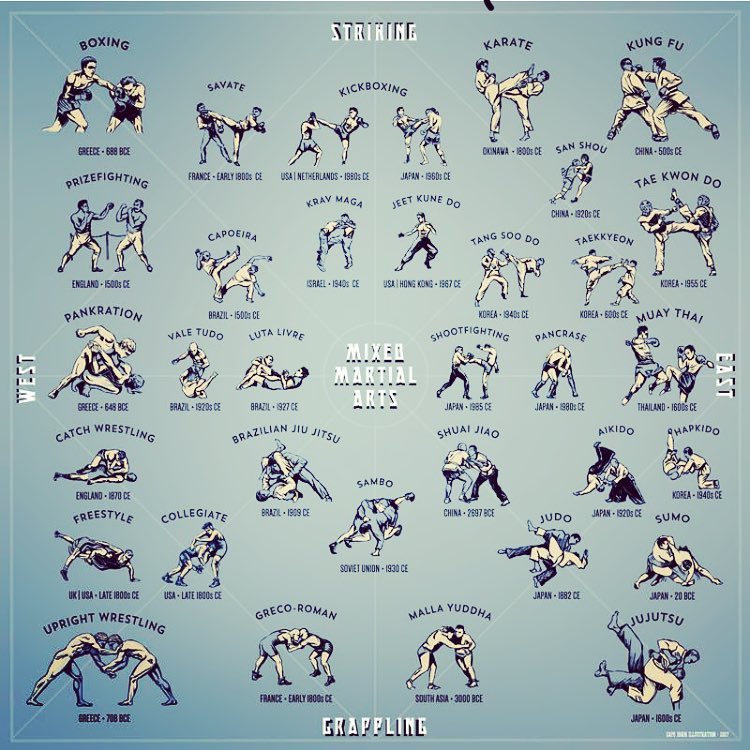Unwinding The Secret Of Several Fighting Style Techniques: An Overview To Martial Arts, Taekwondo, And Extra
Unwinding The Secret Of Several Fighting Style Techniques: An Overview To Martial Arts, Taekwondo, And Extra
Blog Article
Short Article Produced By-Haugaard Weiner
Are you tired of feeling overwhelmed by the large world of fighting styles? With numerous styles to pick from, it can be simple to obtain shed in a sea of strikes, kicks, and mystical names. However worry not!
official source will certainly debunk the different fighting styles styles, taking you on a trip from the powerful strikes of Karate to the dynamic kicks of Taekwondo. Prepare yourself to uncover the beginnings, strategies, and viewpoints behind these ancient art types.
So, tighten your belt and prepare to embark on an informing exploration into the captivating world of martial arts.
Origins of Martial Arts Styles
The beginnings of fighting styles designs can be mapped back to ancient human beings and their requirement for protection and fight methods. Throughout background, different cultures created their own distinct approaches of combating, each with its own set of techniques and philosophies.
In China, for instance, fighting styles styles such as Kung Fu and Tai Chi were created as a way of self-defense and enhancing physical and psychological wellness.
In Japan, the samurai warriors created styles like Martial arts and Judo, concentrating on self-control, accuracy, and proficiency of the body.
Similarly, in Korea, Taekwondo emerged as a martial art stressing high kicks, rapid movements, and psychological perseverance.
https://www.gazettelive.co.uk/news/teesside-news/teen-martial-arts-world-champ-24351877 laid the foundation for the varied range of martial arts styles that exist today, each with its own abundant history and social value.
Strategies and Training Methods
To understand fighting styles designs, experts must learn numerous methods and training techniques.
Techniques are the specific activities and activities utilized in battle, such as strikes, kicks, throws, and blocks. Various martial arts designs have their very own special set of strategies that experts must understand through strenuous training.
Training approaches vary depending upon the design, however they typically include a mix of physical fitness, drills, sparring, and forms.
Physical fitness is crucial to build toughness, flexibility, and endurance. Drills aid practitioners fine-tune their strategies and improve their speed and precision.
Competing allows simply click the next website page to practice their strategies in a regulated, reasonable environment. Types, also called kata, are prearranged sequences of activities that assist experts develop muscle mass memory and focus.
Viewpoints and Principles
Checking out the ideologies and concepts of fighting styles styles can give you with a much deeper understanding of your picked discipline. Read Much more fighting style has its very own unique ideology and collection of guiding principles that shape the method it's exercised.
As an example, Karate highlights self-control, regard, and self-discipline. It shows practitioners to focus their body and minds, enabling them to protect themselves while keeping a feeling of inner tranquility.
On the other hand, Taekwondo puts a solid emphasis on speed, agility, and adaptability. Its concepts are rooted in the tenets of courtesy, stability, willpower, self-constraint, and resolute spirit.
Verdict
Since you have actually discovered the origins, strategies, and philosophies of various martial arts styles, you have a much deeper understanding of these ancient techniques.
Imagine a young karate pupil, experimenting steady resolution and emphasis, appearing boards with an effective strike.
Their journey showcases the devotion and strength needed to master a fighting style, advising us that with technique and determination, anything is feasible.
